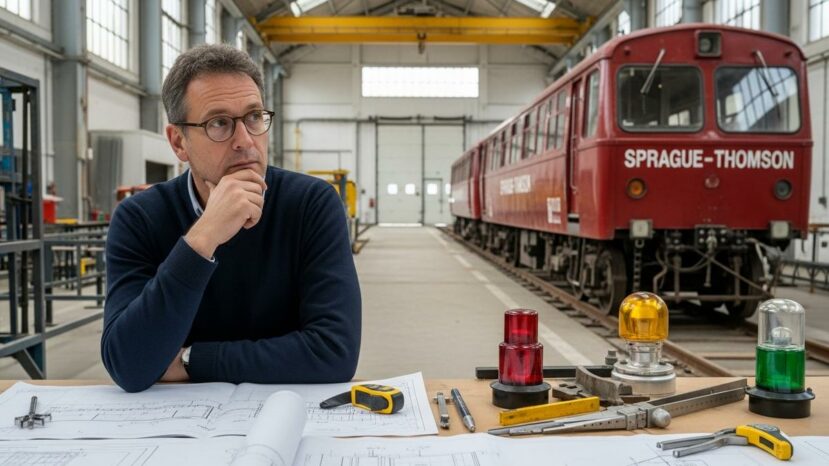RATP prepares to open an urban transport museum in Paris in 2032

By 2032, an urban transport museum could be built in Paris. Supported by RATP, this project aims to preserve a century of mobility and pass it on to the public.
A course set for 2032, steps already taken
According to available information, the target opening date is 2032. The state-owned company has therefore launched programming and inventory studies. RATP is structuring its heritage teams and identifying suitable spaces. RATP is also consulting with cultural and technical partners.
The future museum would bring together existing in-house collections, preserved for decades. The stated aim is twofold: to preserve, and to tell the story of everyday use. RATP sees itself as a bridge between technology and public service. However, the precise budget has not been made public.
One of the highlights is the red Sprague-Thomson trainset. It appears as a reproduction made from original parts, to recreate the experience of the first lines.
“The project is moving forward in stages, with priority given to saving the parts.”
Timetable, locations and governance
The exact site has yet to be determined, as several scenarios are being discussed. Technical sites or halls could be suitable. The final decision will involve the local authorities and Île-de-France Mobilités. RATP is therefore emphasizing a concerted approach.
The schedule calls for a design phase, followed by a construction phase. In addition, digitization of the collections is accelerating to prepare the content. Accessible itineraries are targeted right from the design stage. In short, RATP insists on mediation and social utility.
- Target opening around 2032
- Historical collections and technical items showcased
- Site selection and operational set-up in progress
- Expected public and cultural partnerships
- Accessible pathways and enhanced mediation
What will we see in this future transport museum?
At the heart of the project are vehicles and gestures. Buses, trains, signalling systems and driver’s cabs could all interact. Demonstration workshops would give meaning to the parts. RATP could also offer tactile and energy-efficient devices.
The tour would revolve around human and technical stories. In addition, job stories would help visitors understand safety and maintenance. Links with existing depots and workshops remain a possibility. However, RATP has not given details of the final program.
Another eagerly-awaited icon, the green Sprague-Thomson recalls the metro’s pivotal years. Its sober design and sturdiness tell the story of a city on the move.
The family audience is particularly targeted, without excluding specialists. In addition, night-time slots and technical tours are planned throughout the year. Ticketing and pricing have yet to be defined. As a result, RATP has indicated that it will move forward as arbitration progresses.
Cultural impact, innovation and local appeal
A museum of this kind can revitalize a neighborhood and create jobs. It would also raise the profile of technical training courses. Educational partnerships will offer concrete teaching resources. In short, the RATP brand would see it as a vector of transmission.
Digital technology is used cautiously, to enrich the story without overpowering it. Augmented reality and simulators are also being studied. Priority is given to the authenticity of the physical pieces. As a result, RATP is asserting the value of its physical heritage.
Next steps and points to watch
The next milestones concern site selection and architecture. A competition could set the tone for the site. Administrative procedures will follow. In short, tight management will ensure that we stay on course for 2032.
To succeed, the collections will have to be maintained to the highest standards. Energy efficiency will also be a key factor in the building’s design. Clear governance will reassure partners and sponsors. On the other hand, RATP will have to balance ambition, costs and deadlines.
Another heritage feature is the reproduction of line 1’s first wooden train, using original parts. RATP’s aim is to recall the beginnings of the Paris metro and its technical choices.
The future site must remain open to controversy and debate. In this way, it will be able to deal with transitions, strikes and quality of service. Oral archives will complement the objects and documents. As a result, the museum will offer a living interpretation of urban mobility.





No comments
Post a comment
Always participate in accordance with the law and with respect for others.